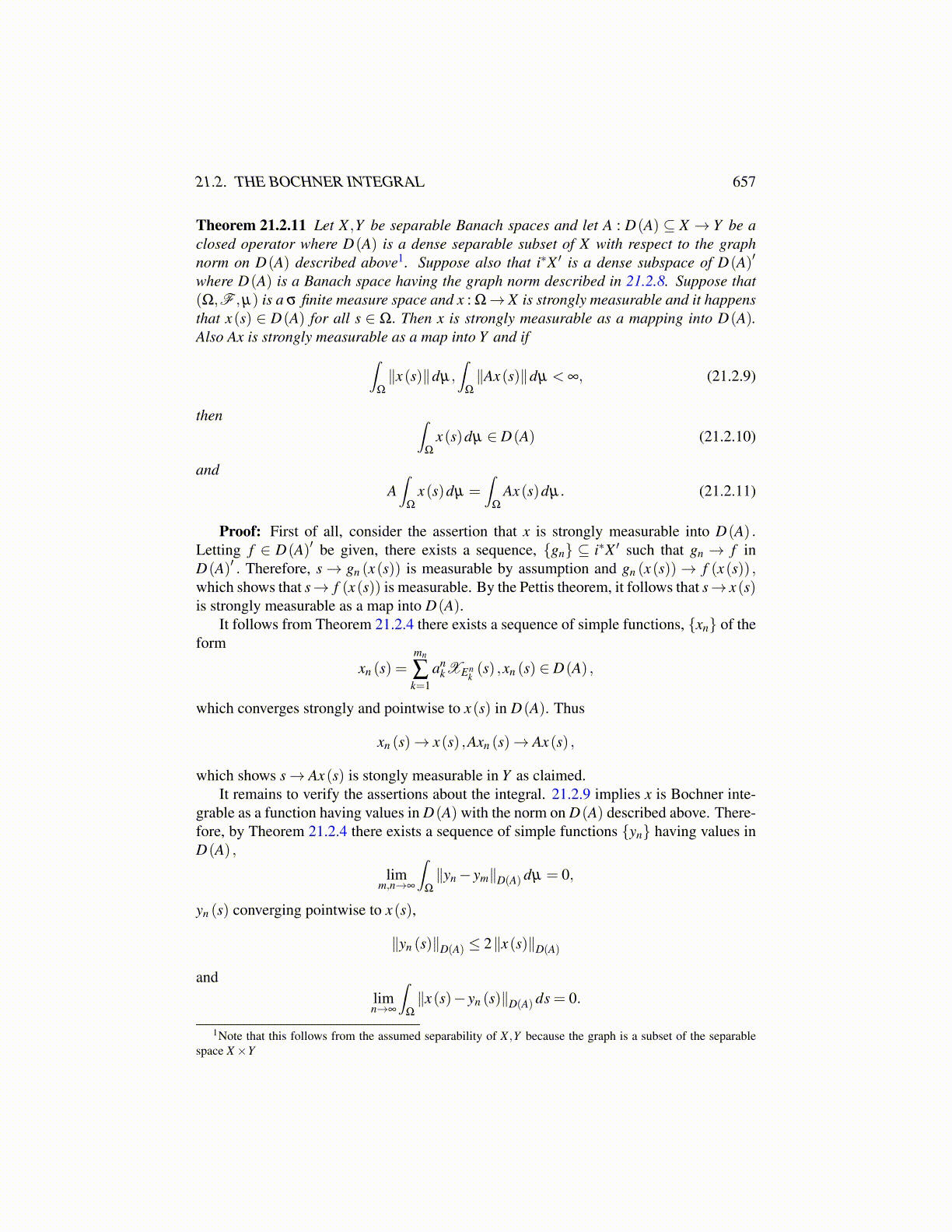
21.2. THE BOCHNER INTEGRAL 657
Theorem 21.2.11 Let X ,Y be separable Banach spaces and let A : D(A) ⊆ X → Y be aclosed operator where D(A) is a dense separable subset of X with respect to the graphnorm on D(A) described above1. Suppose also that i∗X ′ is a dense subspace of D(A)′
where D(A) is a Banach space having the graph norm described in 21.2.8. Suppose that(Ω,F ,µ) is a σ finite measure space and x : Ω→ X is strongly measurable and it happensthat x(s) ∈ D(A) for all s ∈ Ω. Then x is strongly measurable as a mapping into D(A).Also Ax is strongly measurable as a map into Y and if∫
Ω
∥x(s)∥dµ,∫
Ω
∥Ax(s)∥dµ < ∞, (21.2.9)
then ∫Ω
x(s)dµ ∈ D(A) (21.2.10)
andA∫
Ω
x(s)dµ =∫
Ω
Ax(s)dµ. (21.2.11)
Proof: First of all, consider the assertion that x is strongly measurable into D(A) .Letting f ∈ D(A)′ be given, there exists a sequence, {gn} ⊆ i∗X ′ such that gn → f inD(A)′ . Therefore, s→ gn (x(s)) is measurable by assumption and gn (x(s))→ f (x(s)) ,which shows that s→ f (x(s)) is measurable. By the Pettis theorem, it follows that s→ x(s)is strongly measurable as a map into D(A).
It follows from Theorem 21.2.4 there exists a sequence of simple functions, {xn} of theform
xn (s) =mn
∑k=1
ankXEn
k(s) ,xn (s) ∈ D(A) ,
which converges strongly and pointwise to x(s) in D(A). Thus
xn (s)→ x(s) ,Axn (s)→ Ax(s) ,
which shows s→ Ax(s) is stongly measurable in Y as claimed.It remains to verify the assertions about the integral. 21.2.9 implies x is Bochner inte-
grable as a function having values in D(A) with the norm on D(A) described above. There-fore, by Theorem 21.2.4 there exists a sequence of simple functions {yn} having values inD(A) ,
limm,n→∞
∫Ω
∥yn− ym∥D(A) dµ = 0,
yn (s) converging pointwise to x(s),
∥yn (s)∥D(A) ≤ 2∥x(s)∥D(A)
andlimn→∞
∫Ω
∥x(s)− yn (s)∥D(A) ds = 0.
1Note that this follows from the assumed separability of X ,Y because the graph is a subset of the separablespace X×Y